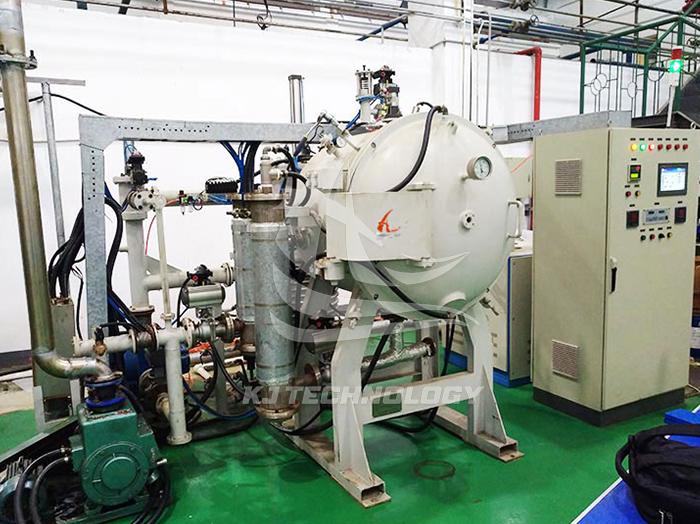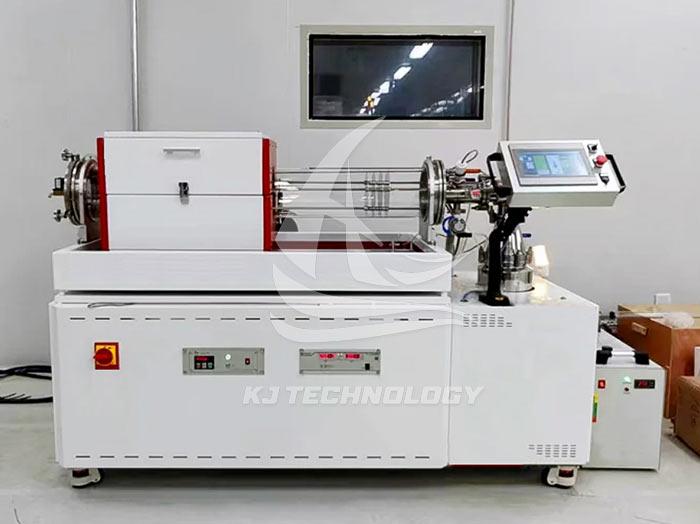In which industries are gas vacuum furnaces applied?
 07-29-2025 Author: KJ technology
07-29-2025 Author: KJ technology
Gas vacuum furnaces play a key role in multiple high-precision and high-performance material processing fields due to their unique vacuum and controllable atmosphere environment. The following are their main application industries and specific scenarios:
1. Metal material processing
EADS
Heat treatment of high-temperature alloys/titanium alloys: key components such as aircraft engine blades and turbine disks are annealed and solution treated in a vacuum environment to avoid oxidation and decarburization. The surface hardness can reach HRC60-65, and the deformation is less than 0.05mm, meeting the requirements for extreme environmental use.
Vacuum brazing: used for welding precision structures such as aluminum alloy heat exchangers and stainless steel heat exchangers, with a weld defect rate of less than 0.1% and a joint strength improvement of over 30%.
automotive industry
Gear/tool processing: After vacuum quenching, the surface hardness uniformity of high-speed steel and mold steel is improved, wear resistance is enhanced, and the service life is extended by more than 50%.
Carbonization process: Vacuum carburizing and gas quenching are carried out on structural steels such as 20CrMnTi, with more precise control of carbon concentration gradient. The surface hardness can reach 58-62HRC, and the core toughness is optimized.
electronic industry
Semiconductor packaging: Under a vacuum degree of 10 ⁻ Pa, Sn Ag Cu solder is used for soldering integrated circuit lead frames to avoid the influence of oxide layers on bonding strength, and the yield rate is increased to 99.5%.
Annealing of electronic components: Non oxidative annealing is performed on magnetic alloys, precision resistors, and other components to increase resistance stability by 20%.
2. Powder Metallurgy and Advanced Materials
Hard alloy production
Vacuum sintering: densification treatment is carried out on tungsten cobalt alloy at 1400-1600 ℃, resulting in an increase in density from 92% to 99.5% and a 40% increase in flexural strength.
Melt infiltration process: By promoting the infiltration of low melting point metals such as copper and silver in a vacuum environment, high-performance metal based composite materials are prepared.
ceramic materials
High purity ceramic sintering: firing alumina and silicon nitride ceramics under vacuum or nitrogen atmosphere to avoid impurity introduction, improve dielectric performance by 15%, suitable for high-end scenarios such as 5G communication substrates.
Ceramic metal connection: Vacuum brazing is used to achieve non oxidative connection between ceramics and metals, with a joint strength of over 150MPa.
New material research and development
Preparation of nanomaterials: Nano silver and nickel powders are synthesized through evaporation condensation mechanism in a vacuum environment of 10 ⁻² -10 ⁻³ Pa, with particle size distribution controlled below 50nm.
High temperature superconducting material: Under vacuum annealing conditions at 850 ℃, the critical current density of YBCO superconducting tape is>1 × 10 ⁶ A/cm ², which meets the requirements of applications such as maglev trains.
3. In the field of new energy and environmental protection
Lithium battery recycling
Vacuum pyrolysis: Separate electrode materials and separators in a vacuum environment of 500-800 ℃, with cobalt, nickel, and lithium recovery rates>95%, avoiding the risk of combustion of electrolyte volatiles.
Synthesis of positive electrode material: High nickel ternary material (NCM811) was prepared by vacuum sintering, with a capacity retention rate increased by 10% and a cycle life extended to over 2000 times.
Fuel cell manufacturing
Catalyst reduction: Pt/C precursor is reduced to 2-5nm nanoparticles in a vacuum degree of 10 ⁻ Pa and H ₂ atmosphere, resulting in a 30% increase in catalytic activity. It is used as the core component of proton exchange membrane fuel cells (PEMFC).
4. Special Processing and Cultural Relics Protection
Post processing of additive manufacturing
Vacuum hot isostatic pressing (HIP): 3D printed Ti-6Al-4V alloy is subjected to 1200 ℃ and 200MPa pressure treatment to eliminate internal pores, increase density from 95% to 99.9%, and extend fatigue life by 5 times.
Cultural Relics Protection
Bronze ware rust removal: Decompose Cu ₂ (OH) ∝ Cl rust products in a vacuum environment of 100-200 ℃ to avoid damage to the surface of cultural relics caused by traditional chemical treatment. The surface roughness Ra after treatment is less than 0.1 μ m.








